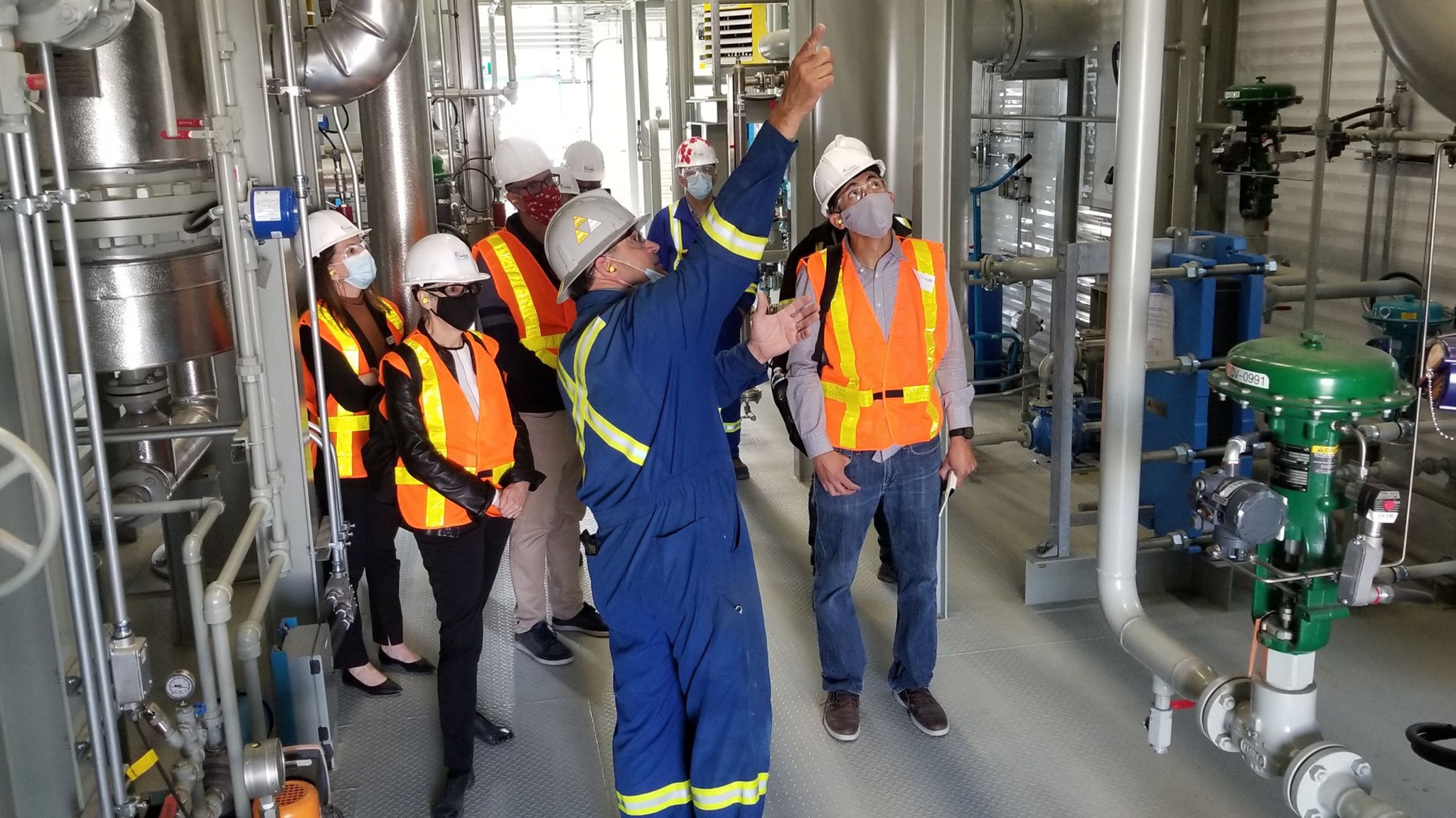
In the race to innovate to reduce greenhouse gas emissions and improve environmental performance, Canada’s oil and gas industry has something that other countries don’t – competitors working together to achieve the same goal.
“An important differentiator in Alberta’s energy sector is its collaborative industry efforts in R&D,” analysts with BMO Capital Markets wrote this June.
“In our view this level of industry cooperation is unique within the global oil business, and should continue to support the Canadian energy sector’s innovation.”
One example is Canada’s Oil Sands Innovation Alliance (COSIA).
“When Canada’s oil sands industry came together to form COSIA in 2012, it was an unprecedented collaboration between competitors, the likes of which had not been seen anywhere else in the world,” Wes Jickling, chief executive of COSIA, said in a statement to the CEC.

“Fast forward to today, almost a decade later, and COSIA members have proven they can go further, faster, together when it comes to environmental innovation and improvement.”
COSIA’s members make up more than 90 per cent of total oil sands production. Collaboration is focused on enhancing environmental performance, measurement, and accountability in four priority areas: greenhouse gases, land, water, and tailings.
Since 2012, COSIA members have cooperated on 1,143 projects.
“Collaborating on environmental improvement initiatives is a major component of what sets Canada’s oil sands industry apart,” Jickling says.
A recent example is the Oil Sands Pathways to Net Zero.
This initiative is centered on a major carbon capture, utilization and storage trunkline, as well as the deployment of existing and emerging greenhouse gas reduction technologies such as clean hydrogen.
To COSIA’s knowledge, it is the only organization of its kind in the world that is doing such unique work.
“As trailblazers of a sort, we are often contacted by organizations from other parts of the world that are interested in learning about our model,” says Jickling.
COSIA not only shares its story worldwide, but its knowledge and resources as well.
One example is the Silvicultural Toolkit, an online portal for reclamation best practices. Hosted in collaboration with Natural Resources Canada, the portal offers a wealth of free information to professionals around the globe restoring land once used for activities such as resource development, forestry, landfills, and tourism back to a state functionally equivalent to pre-disturbance.
Recently, COSIA has advanced its research through new partnerships with universities, government, research institutes, regulators, and vendors.
For example, COSIA members partnered with Quebec’s GHGSat to advance emissions monitoring from space, a technology now in use in the oil sands and other industries.
In addition, in the NRG COSIA Carbon XPRIZE, awarded this April after five years of competition, teams demonstrated ways to turn the most CO2 into products with the highest value. The $20 million purse was split between Nova Scotia-based CarbonCure Technologies and Los Angeles-based CarbonBuilt.
Both winners use their technology to embed carbon into concrete, making it stronger and greener.
“At the same time, this COSIA initiative was instrumental in establishing the Alberta Carbon Conversion Technology Centre which is available to innovators from around the world to test carbon conversion technologies,” says Jickling.
In terms of the economic value of partnerships in the oil sands, Jickling says that “by collaborating as an industry and with external parties, members tend to realize anywhere from four to 40 times their individual investments in research and development through COSIA.”
Through sharing resources, oil sands companies can do more research and development than they could individually, which leads to quicker outcomes.
BMO reports that since 2014, oil sands operators have reduced their fresh water use per barrel of oil produced at in situ operations by 44 per cent. Eighty to 95 per cent of water used in the industry is recycled.
Meanwhile, since 2013 the industry reduced its emissions intensity by 27 per cent, with another 20 to 30 per cent reduction expected over the next decade, according to BMO analysts. This projection doesn’t consider some potentially game changing emissions reductions technologies being worked on.
The unaltered reproduction of this content is free of charge with attribution to Canadian Energy Centre Ltd.